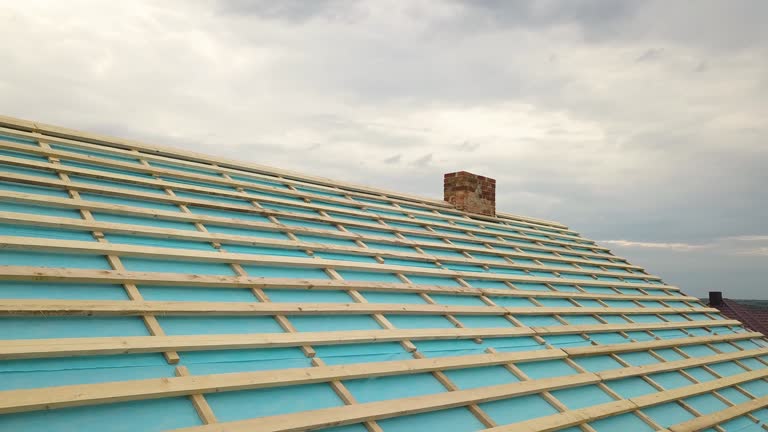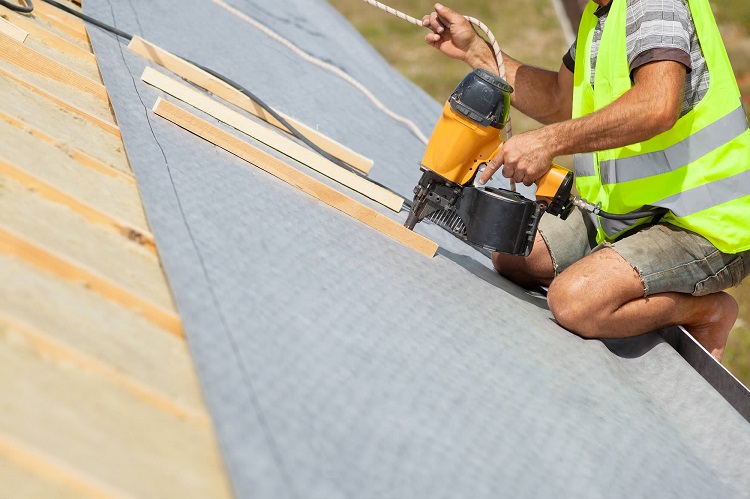Breathable roof membranes are a common feature in modern roofing systems, but there’s often confusion about whether they are actually waterproof. If you’ve ever wondered about their ability to keep water out while allowing moisture to escape, you’re not alone. Understanding how these membranes work and their limitations is key to ensuring your roof remains protected from the elements.
What Is a Breathable Roof Membrane?
A breathable roof membrane is a synthetic sheet designed to be installed under roof tiles or slates. Its main job is to allow moisture from inside the house to escape while preventing external water from getting in. This balance is crucial for maintaining a dry and well-ventilated roof space, reducing the risk of condensation buildup.
These membranes are typically made from materials like polypropylene or polyester, which are engineered to be both permeable to vapour and resistant to liquid water. They’re often laid across the rafters before the battens and tiles go on top, acting as a secondary barrier beneath the primary roofing material.
Is It Really Waterproof?
This is where things get a bit tricky. Breathable membranes are water-resistant rather than fully waterproof. They are designed to shed water that might get beneath the tiles due to wind-driven rain or minor leaks. However, they are not intended to be the sole waterproofing layer of the roof.
Most high-quality breathable membranes have a water column rating, which measures their resistance to water penetration. This rating is usually sufficient to prevent rainwater ingress under normal circumstances. However, if water pools on the membrane for extended periods, or if it’s exposed to extreme conditions, there’s a chance some moisture could seep through.
How Does It Work?

The secret lies in the microscopic structure of the membrane. These materials are designed with pores that are too small for liquid water to pass through but large enough to allow water vapour to escape. This is what makes them ‘breathable’ they help regulate moisture levels inside the roof space by letting trapped humidity out while keeping external moisture at bay.
Without this breathability, condensation could build up inside the roof, leading to damp problems, mould growth, and even structural damage over time. That’s why these membranes are particularly useful in modern, well-insulated homes where airflow might be more restricted.
When Can Water Get Through?
Despite their water-resistant properties, breathable membranes are not completely immune to water ingress. Here are a few situations where water might penetrate:
-
Heavy Rain During Installation: If the membrane is left exposed for too long before the tiles are installed, prolonged heavy rain could cause some seepage.
-
Pooling Water: These membranes are designed to shed water, not to hold it. If water collects in dips or folds, it might eventually seep through.
-
Tears or Damage: Any rips or punctures in the membrane can allow water to pass through, which is why careful handling during installation is essential.
-
Ageing and Wear: Over time, membranes can degrade, especially if they’ve been exposed to UV rays or fluctuating temperatures for extended periods.
Does It Replace Traditional Roofing Felt?
Breathable membranes are often used instead of traditional bitumen-based roofing felt, which was common in older roofs. Unlike felt, breathable membranes allow moisture to escape, reducing the risk of condensation. However, they still need to be combined with properly installed tiles, slates, and flashing to form a fully waterproof roof. If you’re unsure which system is right for your home, professional advice from services like norwich-roofing.co.uk can help you make the right decision.
How to Maximise Water Resistance
If you’re relying on a breathable membrane as part of your roofing system, there are a few things you can do to improve its performance:
-
Ensure Correct Overlapping: Membranes should be installed with the correct overlap between sheets to prevent gaps where water could seep through.
-
Use High-Quality Materials: Not all membranes are created equal. Look for those with a high water resistance rating and UV protection if they’ll be exposed for a while.
-
Check for Damage:Any rips, holes, or worn areas should be repaired or replaced to maintain protection.
-
Ensure Proper Ventilation: While breathable membranes help with moisture control, additional ventilation in the roof space can further reduce condensation risk.
